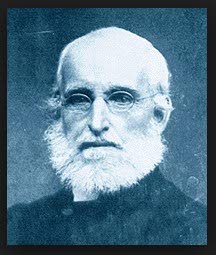‘This simple gesture exemplified the willingness of Morton to sacrifice his home and time for the children of poor, uneducated, indentured labourers’

UPON slavery’s demise in 1838, attempts were made to replace plantation labour with imported Chinese, Syrian and Portuguese workers.
However, due to an intolerance of the climate and arduous work, these workers proved unsatisfactory and eventually, indentured Indians from India were utilised.
In 1844, the British government approved Indian immigration and on May 30, 1845, the first batch of 213 Indians arrived in Trinidad.
The immigrants were sent to work on the sugar estates at Perseverance, Mount Pleasant, Cedar Hill, Williamsville and Les Efforts. Other West Indian colonies also employed indentured labour.
One of the characteristics of colonialism was the rigid racial and class structures inflicted upon the inhabitants of the British West Indies. The elite Whites comprised the colony’s upper class and were landowners, colonial officials and planters.
The middle class consisted of Black and Coloured persons who were educated and some were property owners. Included among the middle class were civil servants, lawyers and journalists; whilst the lower class, at the base of the social pyramid, comprised working class East Indians and Africans.
The Indians received a hostile reception in the new host society. A group-consciousness and self-awareness among East Indians existed upon their arrival in 1845 which contributed to the polarisation of the East Indians and Africans.
One of the negative effects of immigration was the mutual distrust and tension between Africans and East Indians.
The Africans, burdened by heavy taxes and decreased wages, resented the Indians because they were able to work for lower wages. The different cultural and social traits also reinforced the hostility between the colony’s two major races.
It was obvious that since the inception of Indian immigration, nothing was done for their socio-cultural adaptation, so the Indians remained as pariahs in the colony.
The government’s attitude to education of East Indians was one of the early indicators that Indians were neglected. The public ward schools, established by the government and attended by African children, failed miserably to attract the East Indian children.
For instance, during the period 1845-1865 there were few Indians in the 13 Roman Catholic schools and 30 ward schools in the colony. The two main denominational groups-the Anglicans and Roman Catholics had established an educational system which was elitist in nature.
The Queen’s Collegiate School, (later Queen’s Royal College), established in 1859, did not cater for the lower class. After ten years of existence, the roll of the Collegiate School comprised only 200 pupils and, less than a fifth of the students in 1869 were Coloured with a notable absence of Indians and Africans.
At this Port-of-Spain school, students were required to pay fees and East Indian children, deemed illegitimate, were not accepted. Another deterrent for the East Indian child was language.
The East Indians spoke a variety of native tongues such as Bhojpuri and Urdu whilst the government schools were specialising solely in English.
Also, many East Indians under the indentureship scheme did not appreciate the value of education because of their perceived imminent return to India.
Rev John Morton, a minister of the Presbyterian Church of Nova Scotia (Canada), visited Trinidad in 1867 to recuperate from a bout with diphtheria.
He was surprised at the neglect of thousands of illiterate East Indian children in the colony. By 1868, there were approximately 20,000 East Indians in the colony of Trinidad without an educational future. Upon his return to Canada, Morton appealed to the Presbyterian Church to begin a mission among the Indians in Trinidad. Morton offered to be the pioneer of the mission.
The Church in Canada agreed and Morton and his family arrived in Trinidad on
January 6, 1868.
On March 3, 1868, the education of three East Indian children on the doorsteps of the home of Rev Dr John Morton heralded an endeavour which would supplement the educational mission of other denominational schools.
There was immediate success in this endeavour and by the end of March, 21 children had enrolled. This simple gesture exemplified the willingness of Morton to sacrifice his home and time for the children of poor, uneducated, indentured labourers.
This act was symbolic of the Presbyterian Church’s future commitment and dedication in an uphill task of reforming education in Trinidad.
Dr Jerome Teelucksingh is an activist. He initiated the inaugural observances of International Day for the Elimination of Violence Against Men and Boys (January 31) and World Day of the Boy Child (May 16). He has made academic presentations at tertiary institutions including Harvard University and Oxford University.
See other articles by Dr Jerome Teelucksingh on AZP News:
An Early History of Naparima College
The Glorious City of Port of Spain
Have we Forgotten George Padmore
Nobody Cares about Underachievement
Can we Eradicate Underachievement?
A Quiet Pandemic: Male Underachievement
The Blackest Thing in Slavery wasn’t Slaves
The Importance of Emancipation Day
Tobago’s Working Class in the 1920s, 1930s
Are Humble Caring Fathers Champions?
Influencing West Indian Masculinity
Defining Caribbean Masculinity
Is Monogamy Encouraged in the Caribbean
Naps Girls: From Humble Beginnings to Excellence
US Media Creates Cultural Dependency in the Caribbean
Bloodless Revolution to Save Lives in Developing Countries
The Need for a Social and Moral Revolution
The Law of Supply and Demand in Developing Countries
End the Dependency for Developing Countries
T&T Carnival and the Emperor’s New Clothes
The Influence of Labour on Caribbean Integration
The illusion of political Unity
Presbyterians in Trinidad: Humble Missionaries, Local Workers
Religious Plurality: Curse or Blessing
Caribbean Youth Need Optimism, Patriotism
Rethinking Identities in Caribbean, Latin America
November 19: All Inclusive International Men’s Day
Should International Agencies be Blamed for Unemployment
A Need to Observe Word Unemployment Day
An Ideology for the Trade Union Movement
The Man who Couldn’t be Prime Minister
Social Outburst vs Social Revolution
Challenges of the Men’s Movement
If George Floyd was Denied Parole
The Meaning of Indian Arrival Day in T&T
International Men’s Day – A Way of Life
Wounds that cause school violence
May Day: A Time for Solidarity, Strength
Who Coined the Term ‘Black Power’
The illusion of political Unity
Presbyterians in Trinidad: Humble Missionaries, Local Workers
Religious Plurality: Curse or Blessing
Caribbean Youth Need Optimism, Patriotism
Rethinking Identities in Caribbean, Latin America
November 19: All Inclusive International Men’s Day
Should International Agencies be Blamed for Unemployment
A Need to Observe Word Unemployment Day
An Ideology for the Trade Union Movement
The Man who Couldn’t be Prime Minister
Social Outburst vs Social Revolution
Challenges of the Men’s Movement
If George Floyd was Denied Parole
The Meaning of Indian Arrival Day in T&T
International Men’s Day – A Way of Life
Wounds that cause school violence
May Day: A Time for Solidarity, Strength
Who Coined the Term ‘Black Power’
![]()














Curtis Seepersad
November 7, 2023John Morton believed that to have a educated church one must educate the people. Where there is a church located a school was built nex door.